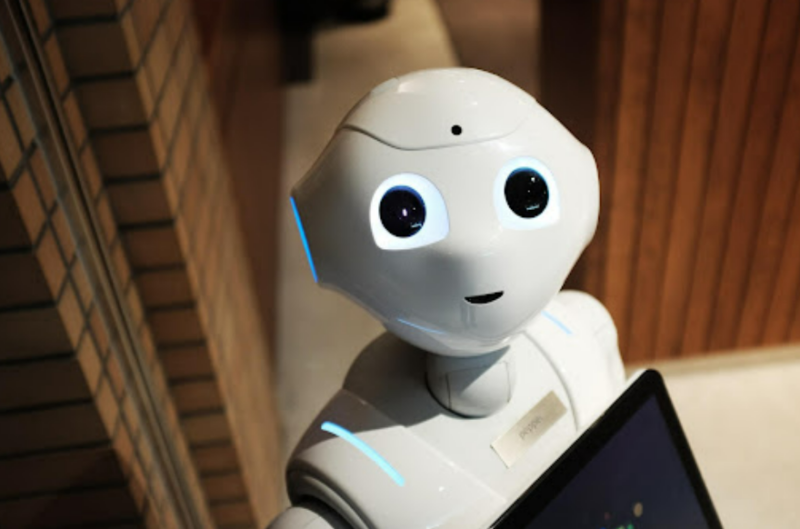Long gone are the days when artificial intelligence (AI) was only featured in sci-fi movies. Today, this progressive technology has been integrated into different industries to improve the quality of life. In fact, AI has become a significant part of the education sector. Educators and students have access to a plethora of educational resources that make it easy to simplify academic concepts.
Even though AI’s penetration into the educator sector is still in infancy, educators are hopeful that as the years progress, the possibilities brought on by this technology will become more and more evident. If you’re writing an essay on the impact AI has had on technology, and have no idea how to approach it, consider engaging 123Homework for professional help.
Artificial learning in conjunction with machine learning (ML) will become the key driver of growth in the education sector. The introduction of new innovations will ensure every student’s academic needs are catered to. The education sector takes center stage in these new developments because world leaders understand the importance of education in the progression of coming generations.
One might argue that the education sector has been developing slower than anticipated. But if you pay key attention to what is taking place in the EdTech space, you realize that the adaptation pace is just right. Key players in the education industry are taking their time to ensure each innovation that’s rolled out reaps the most benefits for students and educators.
What’s more, the 2024 global pandemic expedited the adaptation of pending innovations to enable students to study remotely. In light of the drastic shift in the landscape, this article will highlight the essential roles of artificial intelligence in education.
1. Automate Grading

Automating the grading is one of the best things educators have been able to achieve, thanks to artificial intelligence. Now teachers can focus all their attention on students and leave assignment and exam grading to an accurate grading system that would never get students’ points mixed up.
Setting exams and not worrying about going through each student’s paper also protects teachers from burnout. In the past, teachers had so much work that they hardly had time for themselves and their families. Now, with this new innovation, teachers can finally achieve a work-life balance.
Once the system has marked the papers, teachers also have sufficient time to go through the exam questions and find out which concepts gave most students the hardest time. Revising an exam after the results are out gives students the opportunity to ask any burning questions. Teachers can use this time to give each student the attention they need to understand the concept better.
Passing along the task of grading to AI has completely transformed post-assessment. Teachers’ time has been freed up, and they’re able to follow up on each student’s performance.
2. Support Teachers

When we think about AI’s impact on the education industry, the first thing that comes to mind is how students will benefit from this technology. Well, teachers, too, are having an easier time doing their job now that they have a technology designed to support their efforts. Aside from simplifying the grading process, implementing AI technology in learning institutions ensures teachers don’t have to worry about repetitive administrative tasks.
Any routine processes that AI-supported systems can complete with the help of machine learning have been taken off teachers’ shoulders. What’s more, teachers have an easier time communicating with the student body thanks to the AI chatbot invention. These seamless communication channels ensure that nothing gets lost in translation so teachers and students will always be on the same page. Whether a teacher wants to leave an assignment or apologize for not being able to make it for their lecture, they can use these chatbots to pass the message.
3. Support Students

The main reason why so many people are excited about the penetration of AI technology into the education sector is how much it will support students’ needs. Education has come a long way from the era where the only way to access educational material was to borrow a book from the library. Today, simply owning a smartphone gives students unlimited access to information.
Currently, big players in the education sector are working on an innovation that will ensure every student gets assigned a lifelong learning partner. The integration of machine learning and artificial intelligence will help scientists design robots that can decipher a student’s academic needs.
Imagine having an all-knowing companion who compliments you by helping you overcome your weaknesses and strengthen your strengths. All we can do is hope this materializes so that students in the coming generations experience learning as a challenging but fun experience rather than something they cannot wait to be done with.
4. Meet a Variety of Student Needs

In addition to personalizing learning, artificial intelligence also meets students’ unique academic needs. Educators understand that no two students are the same, and what works for one student might not be what the next one needs. Through machine learning, educators can adapt educational materials to suit students’ various needs.
5. Allow Teachers to Act as Learning Motivators

For a long time, students have feared interacting with their teachers because learning felt like something you either get right or wrong. Thankfully, the constant anxiety that came from constantly wondering whether or not you were in your teachers’ good books is slowly fading away.
And artificial intelligence has played a great role in phasing out this dated culture by exposing students to educational material. Nowadays, learning is a collaborative effort between teachers and students rather than a process only a teacher can initiate like it used to be back then.
Wrapping Up
While we expect to see more as AI is integrated with different education systems, be sure to enjoy what has already been implemented. AI is a technology worth paying attention to because from the looks of things, it’s clear that it’s not going anywhere. The roles in plays in classrooms today is just a glimpse of what the future has in store.

